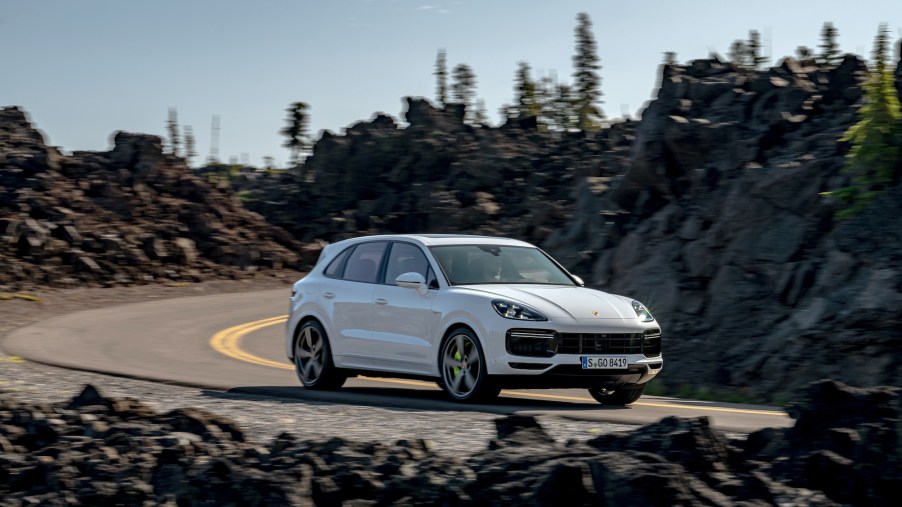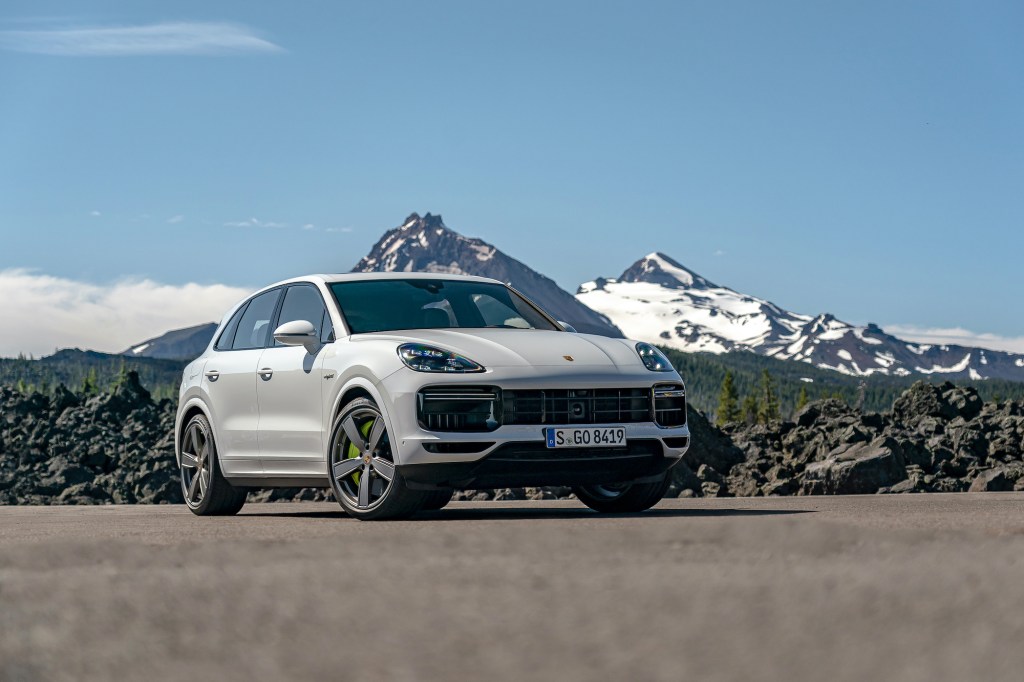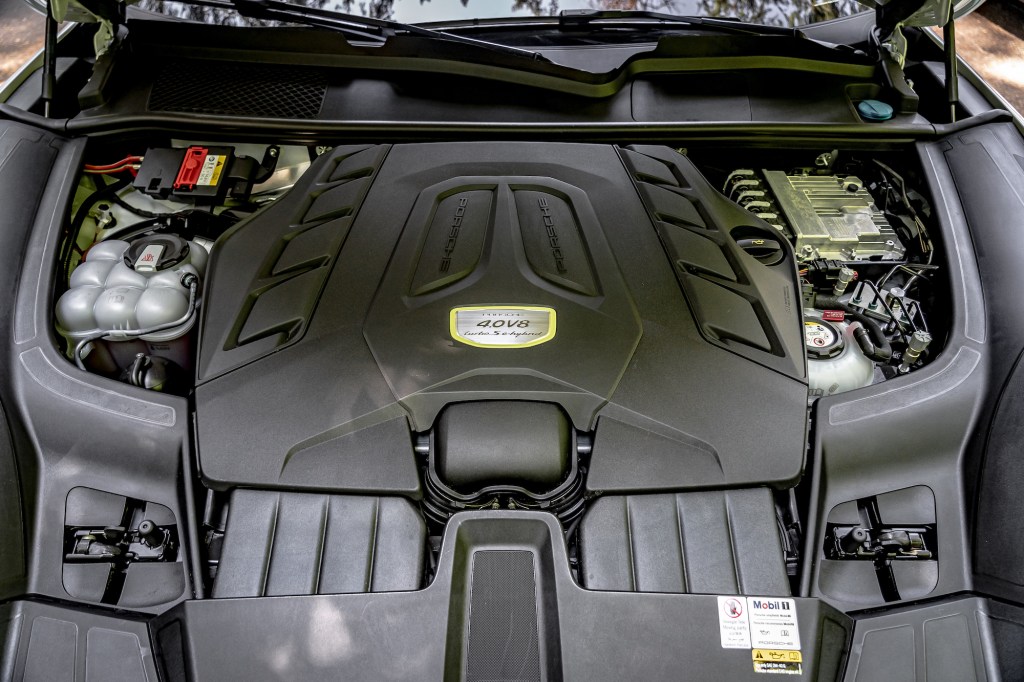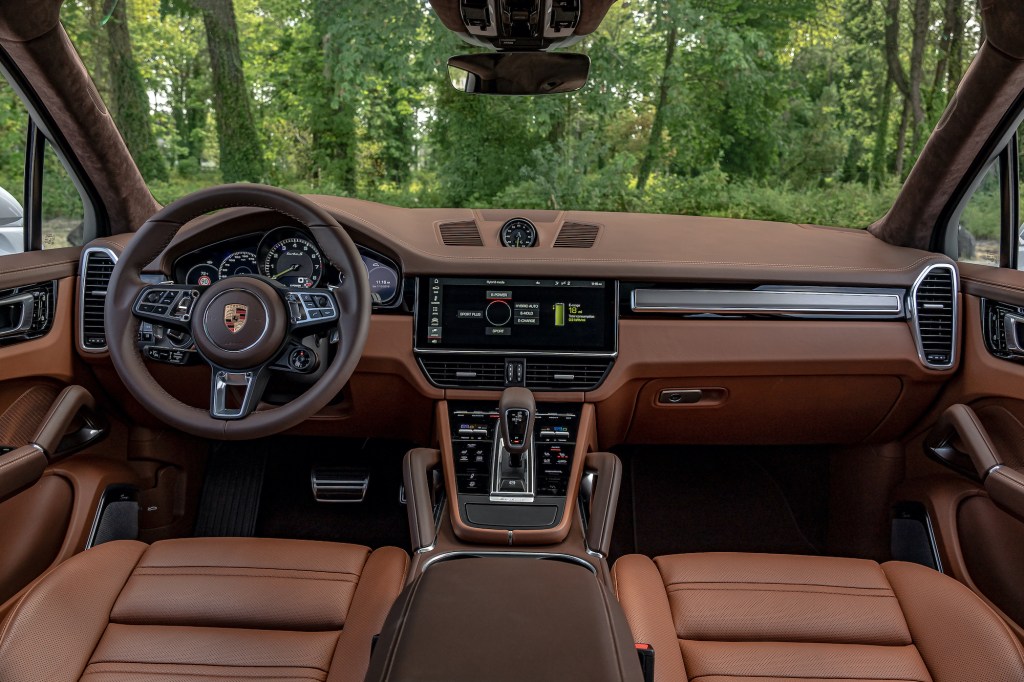
Avoid the 2020 Porsche Cayenne Turbo S e-Hybrid If You Want a Plug-in Hybrid
If you want stellar fuel economy numbers, then the 2020 Porsche Cayenne Turbo S e-Hybrid is not a good choice. But then again, no one would ever buy a Porsche to save money at the pump anyway. However, if you want loads of power, a bevy of luxurious amenities, as well the ability to save some fuel in comparison to say, a Mercedes-Benz G63 AMG, then this iteration of the Cayenne could be for you. It will just cost you a couple of pretty pennies.
The Porsche Cayenne Turbo S e-Hybrid is down on gas mileage, but way up on power

Some might wonder why Porsche even bothered to make the most powerful SUV in its lineup a hybrid, considering the addition of the hybrid system didn’t do much to add to the SUVs fuel economy. However, the automaker didn’t do it solely for fuel economy figures.
According to Car and Driver, Chris Trautman, the manager of Porsche’s SUV product line, stated, “From here on, we hope to make the highest-performing top model of a given Porsche product lineup a hybrid.” And as you can guess, the Cayenne Turbo S e-Hybrid is the pure embodiment of that ethos.
Under the hood, the Cayenne Turbo S e-Hybrid is powered by a twin-turbo 4.0-liter V8 engine that produces 541 horsepower and 567 lb-ft of torque. Funny enough, that sounds like enough power to us, but apparently it wasn’t. So Porsche mated that stout engine to an electric motor that produces 134 horsepower and 295 lb-ft of torque, and together, the glorious combined setup puts out a whopping 670 horsepower and 663 lb-ft of torque. Apparently, in the Porsche world, there is no such thing as “good enough.”

The Cayenne Turbo S e-Hybrid’s fuel economy numbers are secondary
Let’s not forget that this powerful SUV is a plug-in hybrid. As such, that potent powertrain is mated to a 14.1-kWh battery, which gives the Cayenne Turbo S enough power to drive on all-electric power up to 83 mph, according to Porsche. There’s no word on the type of all-electric range that it gets when driving on electric power, however, Motortrend estimated that the range is likely about 20 miles, which tends to disappear quickly.
With all this power, the fuel in the tank tends to disappear quickly, too. Fueleconomy.gov lists the Turbo S e-Hybrid’s fuel economy numbers as 21 mpg combined for the SUV version, and 18 mpg combined for the squished-roof “coupe” version.
Although, again, we can’t expect much considering this SUV was clearly made to be one of the quickest and fastest on the market today. And although the fuel economy numbers aren’t impressive, the performance numbers sure are. The Cayenne Turbo S e-Hybrid can get to 60 mph in just 3.6 seconds and up to a top speed of 183 mph. For some kind of reference, that time bests the aforementioned Mercedes-Benz G63 AMG by 0.3 seconds, as tested by Car and Driver. And that box on wheels isn’t exactly slow either.

All this performance will cost you
Aside from the powerful powertrain that’s backed by the heavy electric artillery, the Cayenne Turbo S has all of the luxury features that you would expect out of a Porsche included power everything, leather seats, and wood trim. There’s even a multitude of ways to configure one of these SUVs with over 10 different types of packages that address the car’s performance, interior lighting, and seating colors. We especially like that you can even opt for a 6-disc CD changer.
It will all cost you, though, as the 2020 Porsche Cayenne Turbo S e-Hybrid has a starting price of around $164,500, and you can bet your bottom dollar that the price will near $200,000 with some of those option boxes checked. But in the end, it’ll all be worth it because you’ll get a whole ton of power and terrible fuel economy.



